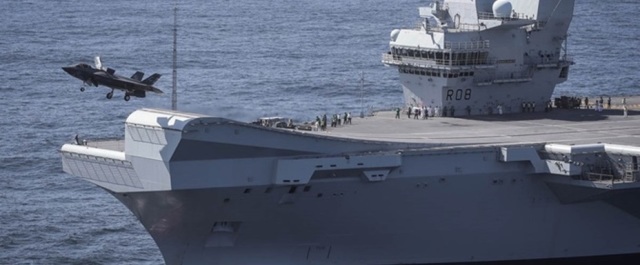TSAMTO, April 29. The UK Ministry of Defense is negotiating with the F-35 Joint Project Office (F-35 Joint Project Office – JPO F-35) on the purchase of an additional batch of 26 fifth-generation F-35B Lightning-2 fighters in addition to the 48 aircraft of this type already ordered.
As Navy Lookout recalls, in a review published in March 2021, "it was only vaguely stated about the intention to purchase more than 48 F-35s." Speaking at a meeting of the special parliamentary committee on defense on April 26, the Deputy Chief of Staff of the British Air Force, Air Marshal Richard Knighton, publicly announced the exact figure for the first time. According to him, the first batch of 48 aircraft already ordered will be delivered by 2025 and the Ministry of Defense now has the funds to purchase another 26 aircraft, including support and personnel costs. Thus, the fleet of F-35 fighters of the British Armed Forces can increase to 74 units. (minus one aircraft lost in an accident in 2021).
According to the publication, during negotiations with Lockheed Martin and JPO F-35, the British defense minister said that the contractor "should demonstrate a reduction in support costs and pay more attention to the integration of British-made weapons." Work on the integration of long-range Meteor and SPEAR-3 air-to-air missiles has begun, but there is no exact date for their commissioning yet. This largely depends on how quickly Lockheed Martin will be able to deliver the updated Block IV version software for the aircraft.
According to the British military department, the cost of the basic version of the F-35B is currently overstated and amounts to about 85 million pounds (106 million US dollars). Thus, the Ministry of Defense of the United Kingdom believes that it has significant leverage in negotiations within the framework of a deal worth about 2.2 billion pounds (2.753 billion US dollars).
Nevertheless, as the publication notes, at the moment it is unclear whether the UK will be able to influence the cost of the second batch of aircraft, since they must first be "reserved" in production cycles (lots, lots). Lockheed Martin's original goal was to produce 156 aircraft per year for customers around the world, but recently problems related to the COVID-19 pandemic, inflation and supply chain disruption have complicated negotiations on lots 15-17. The cost of aircraft began to increase, which made it more difficult to negotiate and "reversed" the downward trend in the cost of aircraft as production increased.
R. Knighton also mentioned in his speech the "split-purchase" versions of the F-35B and F-35A aircraft. He noted that the decision on further purchases, in addition to 74 aircraft, will be made in the middle of the current decade in the context of the fact that London is implementing a project of a promising combat aircraft under the Future Combat Air System (FCAS) program. The original plan, approved in the early 2000s, provided for a fleet of 138 F-35 fighters. The recently launched FCAS project provides for the development and purchase of its own sixth-generation Tempest fighters (as part of BAE Systems, Rolls-Royce, Leonardo and MBDA) with associated UAVs, sensors and new types of ammunition, which is "unlikely to free up funds" in the 2030s to continue the purchase of the F-35.
According to R. Knighton, the development of the situation, taking into account the FCAS program, has three scenarios and possible results. (A) Overcoming the extensive technical challenges associated with the sixth generation fighter (system), the FCAS project will become the second most expensive after nuclear deterrence in defense spending and the centerpiece of the UK aerospace industry, and ideally with several international partners and export buyers. (B) The FCAS technical demonstrator will eventually be "beyond the scope of possible implementation" and will be used as leverage to become a "Tier 1" partner in the future sixth generation fighter development program of the US Air Force. (C) Failure, which will lead to the fact that the UK will purchase an additional batch of F-35s to replace Typhoon fighters.

